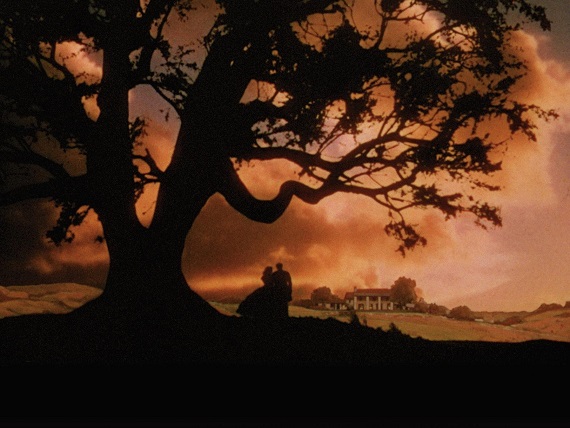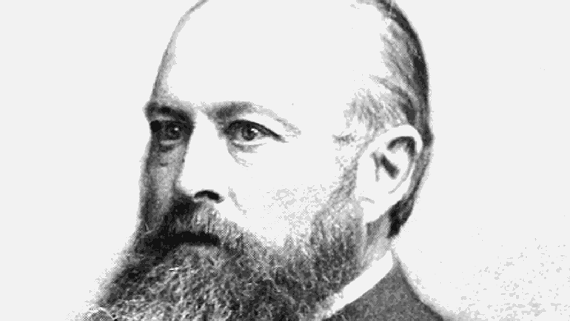This time of year we begin seeing recommendations of books for Christmas presents. This article is also a recommendation for a gift book but I admit that I have an ulterior motive. I intend to compare this book with another one in order to illustrate a political phenomenon that has always intrigued me.
The phenomenon I am referring to is how political trends exert a disproportionate influence on art and entertainment. Conversely, art and entertainment, i.e. works of fiction, have the power to sway political opinions.
In the last one hundred years American political beliefs have changed more rapidly and radically than during any previous century. Most of these changes have not been propitious. And, beginning around 1960, writers realized that they had a better chance of being published if their books reinforced current political trends.
To demonstrate these changes, let’s look at two books beginning with the similarities, which are striking: Two female authors both born and raised in the South. Each wrote a first novel that became a best seller but neither was able to produce a second. Both books were set in the South and both won Pulitzer Prizes for literature. Both novels were made into successful Hollywood films and both films won Academy Awards in various categories.
When I tell you that one book was published in the 1930s and the other in the 1960s you will know I am referring to Margaret Mitchell’s Gone With the Wind and Harper Lee’s To Kill a Mockingbird. But with all the similarities mentioned above, it would be difficult to imagine two more disparate books.
Margaret Mitchell loved her native Georgia and the South in general. Her father, a prominent attorney, was president of the Atlanta Historical Society and from childhood she was immersed in the history of the region, especially the Confederacy and what became known as the Civil War and its aftermath.
Unlike some writers, Margaret didn’t spend time navel-gazing or hanging out with literary types. After graduating from college, she immediately went to work as a reporter for the Atlanta Constitution. This profession kept her in touch with people from various walks of life as well as helped her to hone her writing skills.
Ms. Mitchell became concerned about the number of recollections of the Confederacy that were disappearing from library shelves and being discontinued by publishing companies. To friends she confided the uncanny foresight that posterity would take a one-sided, unfavorable view of the Old South. So she decided to write about that period and she selected the novel format. Her goal was simply to produce a book that would inform future Georgians and other Southerners about the Confederacy before, during and after the Civil War. The result was Gone With the Wind.
Harper Lee was almost the exact opposite of Margaret Mitchell. She was one of those starry-eyed, ‘There’s a novel in me” types who left her hometown of Monroeville, Alabama, and made a beeline to New York City where she lived the life of the struggling bohemian writer, while being subsidized by friends. Ms. Lee made contacts with all the important people and socialized with literati. Having Truman Capote as a friend from childhood was certainly a door opener.
Ms. Lee dreamed of writing a famous novel, one that would be made into a Hollywood film. But after churning out numerous unreadable and unpublished short stories, she began to feel her dream was eluding her. Then the process I mentioned in the opening paragraphs came into play.
In the late 1950s the civil rights movement was gaining momentum and book publishers, tv executives and Hollywood producers were aggressively seeking stories depicting racism. It was in this environment that Harper was encouraged to write To Kill a Mockingbird. She concocted a story of an innocent black man falsely accused of raping a white woman, convicted by a bigoted white jury, and murdered by sadistic white prison guards. Obviously the story was set in the South. Harper Lee knew she had found a winning formula and she also knew her Southern background would lend credence to her novel.
First novels often contain flaws, but To Kill a Mockingbird had more than its share. As the book has now been almost canonized because of its political message, it may be difficult to believe that its publication was not well received by many literary critics of the time. They viewed the book as simplistic, predictable, and overly moralistic. The characters were perceived as one-dimensional stereotypes more suited for children’s’ stories than adult literature. Indeed the novel is often called a child’s book.
Ms. Lee seriously overestimated her writing skills when she decided to tell the story through the eyes of an eight-year-old girl. This literary technique is difficult enough for a seasoned author but with Ms. Lee’s limitations as a writer, it turned out to be a disaster. Sometimes the young girl sounds like an authentic eight-year-old but as one reviewer complained, she is too “self-consciously cute.” At other times she sounds like an adult, using phrases such as: “it was a time of vague optimism,” “the summer passed in routine contentment,” and “my cries were monosyllabic.”
Often Ms. Lee forgets about her young storyteller and slips into the voice of a neutral third party. Naturally this is jarring to the reader and interrupts the flow of the story. Consequently it takes an effort to read the book all the way through although it covers less than 300 pages.
In contrast, Margaret Mitchell avoided gimmicks because she realized that the voice of an omniscient third party was necessary for her to properly tell her story. She was able to vividly portray people, their moods, landscapes and action. Her characters are not cardboard but real people with both good and bad qualities. Like any well-written novel, the characters are permanently changed by the events that they experience.
Contrary to what many may think, GWTW doesn’t eulogize the Confederacy or try to mitigate the effects of slavery. In fact, most of the main characters are opposed to secession and do not support a war with the North that they think the South cannot win. They are simply individuals, complex and attractive individuals, caught up in tragic events. How these events impact their goals and lifestyles and how they react to these upheavals is what makes for a great book, especially in the hands of an outstanding author like Margaret Mitchell.
If you didn’t know better, you would never guess GWTW is the author’s first novel. Margaret Mitchell avoids the clumsiness and mistakes usually found in a first outing. Her sentences have a continuous, faultless rhythm, which is not hindered by flashbacks and dialogue. Gone With the Wind is more than 1000-pages long, but it holds your interest from beginning to end.
Conversely, To Kill a Mockingbird has such serious flaws, that, had it not been for the subject matter and the political climate in which it was issued, I do not believe it would have won a Pulitzer Prize. In fact, I believe, in any other time, a publisher would have demanded numerous corrections and revisions before even considering the book for publication.
It is politics rather than literary merit that keeps this work of fiction in the public’s eye. Currently, To Kill a Mockingbird is on the reading lists of many schools because some educators prefer to avoid complexity in favor of simplistic approaches to issues. In addition to the book being required reading at schools around the country, showing the film has become an annual event with the television industry.
It’s hard to imagine an educator recommending Gone With the Wind in today’s political climate. I fact, I don’t believe that any book that didn’t condemn the Old South would be recommended. But Mrs. Mitchell’s book doesn’t need reading lists or teachers’ recommendations to improve its popularity. Her loyal readers have boosted sales to more than 28 million copies. And it continues to sell after six decades. Because of its popularity in other countries it has been translated into 25 languages.
The full importance of Gone With the Wind as a great work of literature has yet to be realized, although the book is being rediscovered by hordes of new readers. Margaret Mitchell did indeed write the great American novel.
Whereas Mrs. Mitchell’s book is a result of an almost filial devotion to the South, Miss Lee’s book seems to be an opportunistic exploitation of the region. To Kill a Mockingbird is probably the most overrated book of the century just ended. Also, with the new problems facing our nation the book is no longer politically useful. If educators take a fresh and impartial view of Miss Lee’s book, they will realize that it is simply passe.
To Kill a Mockingbird will not satisfy a discerning reader. But if you are looking for a Christmas gift for such a person, you can’t do better than Gone With the Wind; a hardback copy, of course. The recipient should read it slowly, chapter by chapter, savoring Mrs. Mitchell’s singular literary achievement. I suspect that every few years they will take it off the shelf and read it again.
This article was originally published on 17 December 2001 on LewRockwell.com







